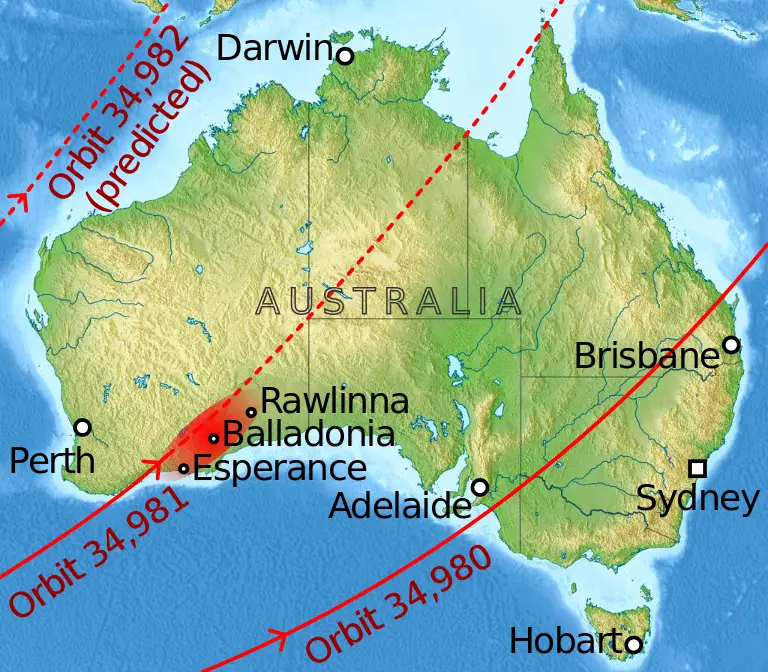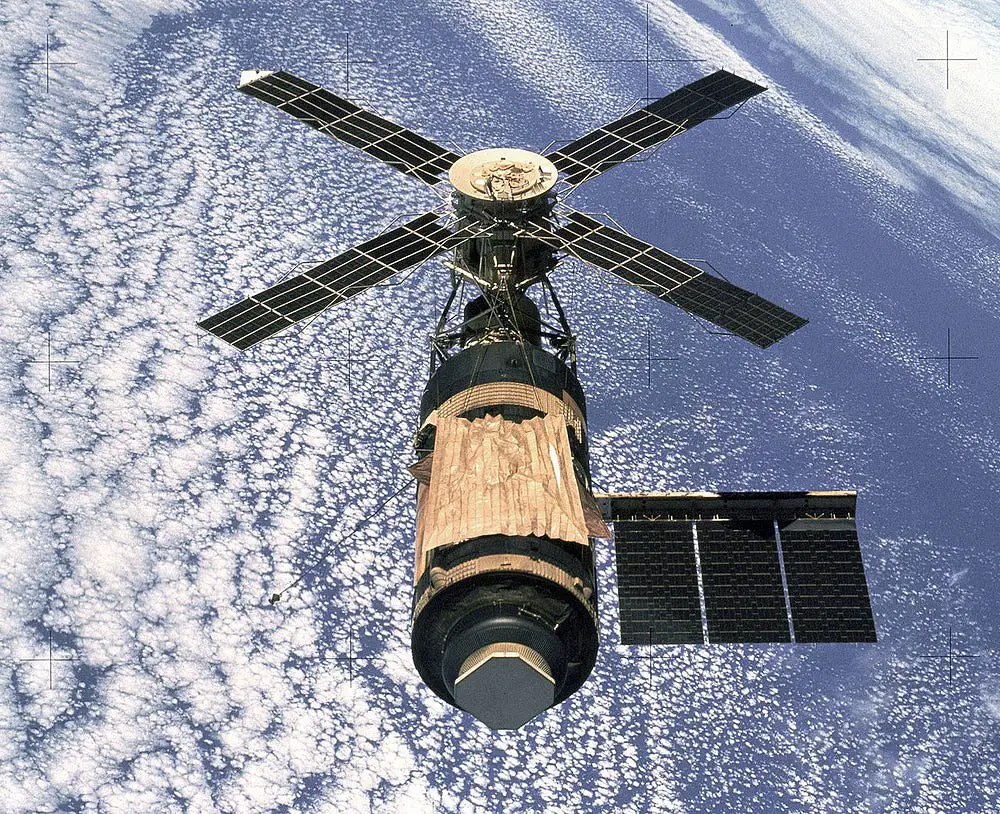On July 11, 1979, the 77.5 ton Skylab, the first United States space station, reentered Earth’s atmosphere. Engineers at NASA had turned off the station’s control moment gyros so that it would miss any population centers in North America, and the debris would fall harmlessly into the Indian Ocean. But its predicted path wasn’t quite where it went. Pieces of Skylab, large and small, came to rest in Southwestern Australia.
Before the Fall
On February 8, 1974, the Skylab-4 crew boosted the station to a higher 269-by-283-mile orbit with the hopes the station could stay in space until 1983 when the Space Shuttle program would be able to service it or deorbit it safely. But because of delays in the shuttle program and increased atmospheric drag and solar activity, it became apparent that the station would reenter the atmosphere in 1979.
In January 1978, the North American Air Defense Command (NORAD) put out an alert that Skylab was falling quicker than expected. NORAD predicted that it could reenter in less than a year due to a higher than average number of sunspots that caused an increase in ultraviolet radiation, which heated the atmosphere.
In August 1978, NASA engineers bought the station several months worth of extra time in space by tipping its nose down four degrees and aligning its long axis parallel to Earth. This reduced its atmospheric drag and slowed the station and its orbit so it would avoid an uncontrolled reentry over populated areas across the Earth.
There was still a belief that there was a fifty-fifty chance a shuttle would be ready to save the station or at least get it more under control since NASA now believed Skylab would fall between November 1979 and April 1980. But that prediction would not come to be true. There would be no shuttle to save it, and Skylab would arrive on Earth sooner than expected.
The Breakup and Fall
Skylab’s ultimate demise was a concern to NASA and for a good reason. It was going to be the largest artificial object to break up in the atmosphere to date. It was 118 feet long and 22 feet wide and had the volume of a three-bedroom house. It weighed 85 tons when it launched in 1973, and after the loss of fuel and equipment over time, it weighed 77.5 tons by 1979.
NASA expected most of Skylab to burn up but also expected that about 500 pieces weighing between 20 to 25 tons would hit the Earth. Of those 500 pieces, most were believed to be under 10 pounds, but ten pieces would weigh over 1,000 pounds. Two of the largest pieces that were believed to survive were a 5,100-pound titanium protective shroud and a 3,900-pound lead safe. The small pieces would be traveling about 30 mph, with the larger ones going about 250 mph.
Much of the world got caught up in where Skylab would ultimately crash down. In the United States, there were “Skylab parties”, people sold t-shirts, and businesses painted targets and designated themselves as Skylab crash zones. Some places in Europe were more cautious and prepared themselves to sound sirens if the debris was coming their way.
Skylab defied predictions up almost to the very end. At 1:30 AM Australia time, NASA had predicted reentry over the mid-Atlantic with a debris field in the Indian Ocean and southern Atlantic. But by 1:40 AM, the prediction had changed, and there was a concern that Australia could be in play.
Twenty minutes later, a fireball was reported over Esperance, which was on the southern coast of Western Australia. NASA had announced that Skylab had fallen into the Indian Ocean, not knowing at the time that the station had broken up later than that. While much of the debris did fall into the Indian Ocean, a portion found its way to Western Australia.

After the Fall
Residents of the area had reported glowing skies and sonic booms in the early morning, and when news struck that debris had fallen in Southwestern Australia between the sparsely populated towns of Esperance, Balladonia, and Rawlinna, it took souvenir hunters less than a day to start looking for pieces of the station. Even contestants in the Miss Universe flew from Perth, where the competition was being held for that year, to look for souvenirs in the desert outback. (A piece of Skylab was even displayed during the competition when it took place on July 20, 1979)
During the mania before Skylab’s reentry, the San Francisco Examiner offered a $10,000 prize to anyone who could deliver a piece of Skylab to their offices within 72 hours of the crash. A 17-year-old Esperance resident named Stan Thornton awoke to the sounds of the station reentering the atmosphere and managed to find a piece of the wreckage. He then hopped a plane and made it to the paper’s offices before the deadline. They paid him the prize.
And the Fine for Littering
Around July 19, 1979, the US space agency team that was in western Australia searching for debris was issued a citation for littering by the Esperance Shire Council in the amount of $400. Though the citation was in jest, the council hoped NASA would pay the fine as a gift for their museum. They didn’t pay. But the fine was finally settled on behalf of NASA in 2009 by a radio host named Scott Barley of Highway Radio when he got his morning listeners to donate the funds.
There were no hard feelings by the residents of Esperance for the unpaid fine. A piece of Skylab was given as a gift to the US National Geographic Society by the Australian Embassy in Washington DC on behalf of the town of Esperance in August 1979. It was a charred plastic piece presented by Perth ecologist Thomas Riggert who said that the people of Esperance “wanted to show they had no malice toward this country.”
Sources: NASA, The Daily Tribune, The Tampa Tribune, The Sydney Morning Herald, Logansport Pharos-Tribune, The Sydney Morning Herald, The Minneapolis Star, Australian Broadcast, History.com


